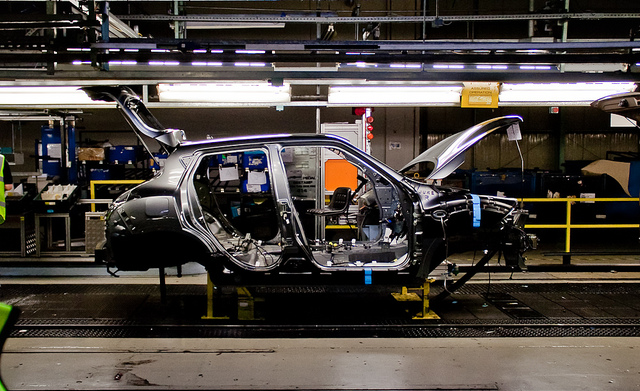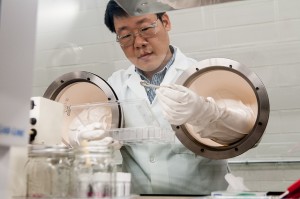
The US$1.6-trillion global automobile industry is by far the biggest in the world among all other industrial sectors. Given its high spillover effect over other upstream and downstream industries, the automobile business is critical to maintaining a country’s industrial competitiveness, to say the least. (image:i am dabe@flickr)
SEOUL, Korea, Jan 9 (Korea Bizwire) – In a situation where the evolution of the auto parts industry is accelerating rapidly, parts material suppliers are responding in two different ways to catch up with the developments. The first is to form alliances with fellow material developers to step up efforts in reducing the weight. This kind of moves is seen most frequently in the steel and aluminum industries. In this case, industry associations and trade groups are usually at the forefront of the initiative.
For example, the World Steel Association has begun an experimental project to develop steel-based lighter-weight auto parts since the mid-1990s. In addition to this, the association has commenced on a project called “FutureSteelVehicle” (FSV) for six years to date. The U.S. Aluminum Association has also kicked off an initiative to study the feasibility of aluminum as a material appropriate for making lighter vehicles through a separate study group called the “Aluminum Transportation Group.”
The second approach by parts material suppliers in order to keep abreast of the development trend in the automotive parts industry is to create joint ventures, cooperative projects, or any other forms with major automobile manufacturers in developing new materials for auto parts. Companies specialized in carbon fibers, bio-materials, and specialty or intelligent-type materials are mostly taking this approach.

There is also a need for the government to step in and lend support to industry in doing R&D in the area of high-performance parts materials for the automobile. (image:Argonne National Laboratory@flickr)
The US$1.5-trillion global automobile industry is by far the biggest in the world among all other industrial sectors. Given its high spillover effect over other upstream and downstream industries, the automobile business is critical to maintaining a country’s industrial competitiveness, to say the least. Although the Korean auto industry has grown by leaps and bounds for the past several decades, led by the growth of the likes of Hyundai Motor and Kia Motors in terms of quality as well as quantity, it is hard to say Korea’s auto industry is at world-class level in terms of auto parts competitiveness. This is especially so in the areas of aluminum and chemical materials, except the narrow confines of steel materials.
In order for the domestic auto-making industry to maintain the current level of competitiveness and possibly gain the upper hand in competition with the world’s major auto companies, it is of utmost importance now for the companies to pay special attention to develop parts materials specifically applicable to auto parts. Up until now, most development efforts in Korea have been focused on steel-based materials, as the auto industry is the most important customer for the steel business. In contrast, the non-ferrous metal and chemical industries have not stepped up their efforts in developing auto-specific applications as the new materials they come up with tended to be generic and not specific to the auto industry.
There is also a need for the government to step in and lend support to industry in doing R&D in the area of high-performance parts materials for the automobile. Recently there are moves in Germany and Japan by auto material developers, parts suppliers, and auto makers to work together under the umbrella of government R&D programs. It needs to be emulated and sophisticated by Korean counterparts as well to develop their own model of joint R&D, with government as an organizer and coordinator.
Technology (Follow us @Technews_Korea)






